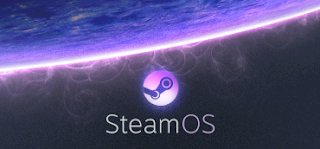TLSP and SteamOS
Speaking of the school-age of an average child, most of us will agree that playing games and studying are two essential parts of such a period of life. I can only have a mean man’s tear when I’m trying to remember this peaceful and careless(only now I think so) time. You have nothing to worry about, just enjoy your time… and play video games. Oh yes, and don’t say you’ve never had such a feeling, I won’t believe you. I mean playing on a PC, otherwise you are super-duper rare species, which is on the edge of extinct =). But let’s talk seriously, I think it is a pretty relevant idea to compare two Linux distributions, that have such a relation: school and video games. So maybe you have guessed, I will try to compare Karoshi(now called TLSP or The Linux Schools Project) and SteamOS.
Origins and target groups
The Linux Schools Project (formerly Karoshi, can be
translated literally as "death from overwork" in Japanese) is an
operating system designed for schools. It is a Linux distribution based on
Ubuntu (operating system). The project maintains two custom distributions, with
one designed for use on servers and the other for use with the server version
on client machines. The server distribution is the official Karoshi, while the
client is known as Karoshi Client. As for its origins, first, it was developed
using Red Hats(an American IBM subsidiary software company that provides
open-source software products to enterprises.), early in the 2000s for schools
in the UK. It was too complicated at that time for common school staff to use
Linux, so TLSP was created. However, TLSP is primarily aimed at educational
environments, it can be used in a Small to Medium Enterprise business environment.
Overviewing SteamOS origins, I may say that first it was mentioned by Gabe
Newell(Gaben, probably you heard about this guy). During a panel at LinuxCon on
September 16, 2013, he stated that he believed "Linux and open source are
the future of gaming", going on to say that the company was aiding game
developers who want to make games compatible with Linux.
Administering
Included systems are convenient for use as file and
print, email, web, and e-learning servers. Here it is possible to administer a
complete network using the integrated web tools and by using some form of
remote desktop technology.
Development and licensing
Development of the client release was given to Robin
McCorkell - a student of Dover Grammar School for Boys. In 2012 Karoshi Client 2
was uploaded to Sourceforge.net. SteamOS, however, is a more developed Linux
distribution based on Arch Linux the last release was SteamOS 3.0 which
includes the Proton Windows compatibility layer.
Software
Karoshi Client contains many applications which were
necessary for school work. Media production software, programming tools,
visualization software, and other, more specific ones. Many IDEs are installed
by default, mainly set for use with Java, but also supporting C/C++ programming
or other languages. The C++ compiler and standard libraries are installed by
default, along with the Boost libraries, ncurses, and Mesa libraries for OpenGL
programming. The Java Development Kit is installed, and integrated with the
installed IDEs.
And here comes the money, SteamOS… As for the name,
surely it is about games. But it is the best only to play games on Linux
platforms. Windows in this case can’t be replaced for PC gaming. But we will
see, and maybe in the future, some changes will follow for us to prefer this distribution
of Linux apart from Windows. Here more relatable can be such thing as Steam
Deck, a kind of a console to play games from your Steam library.


Коментарі
Дописати коментар